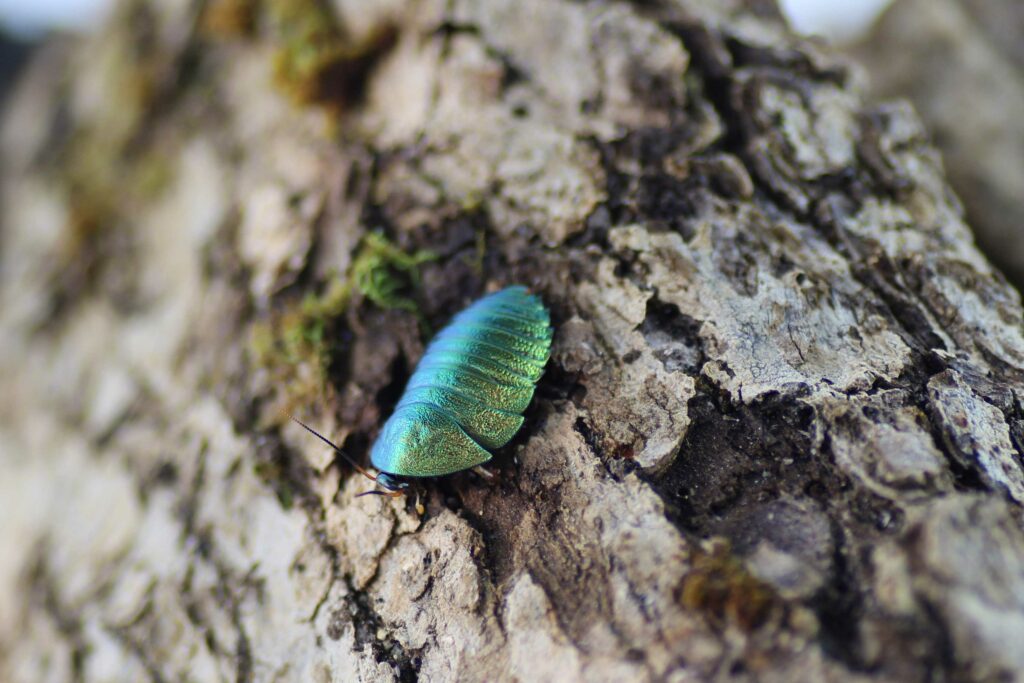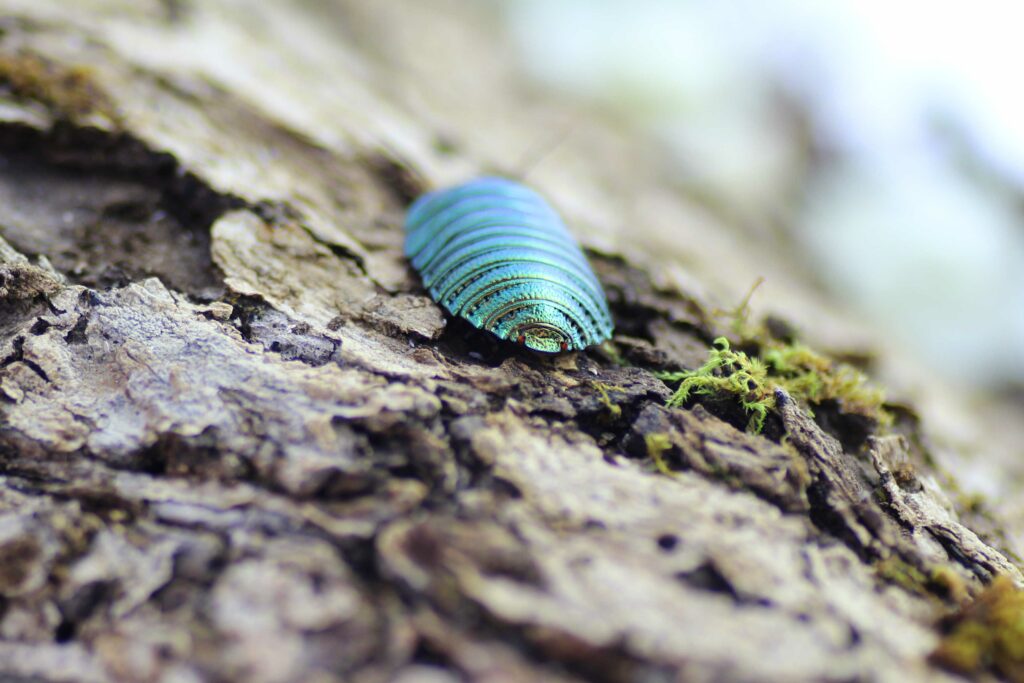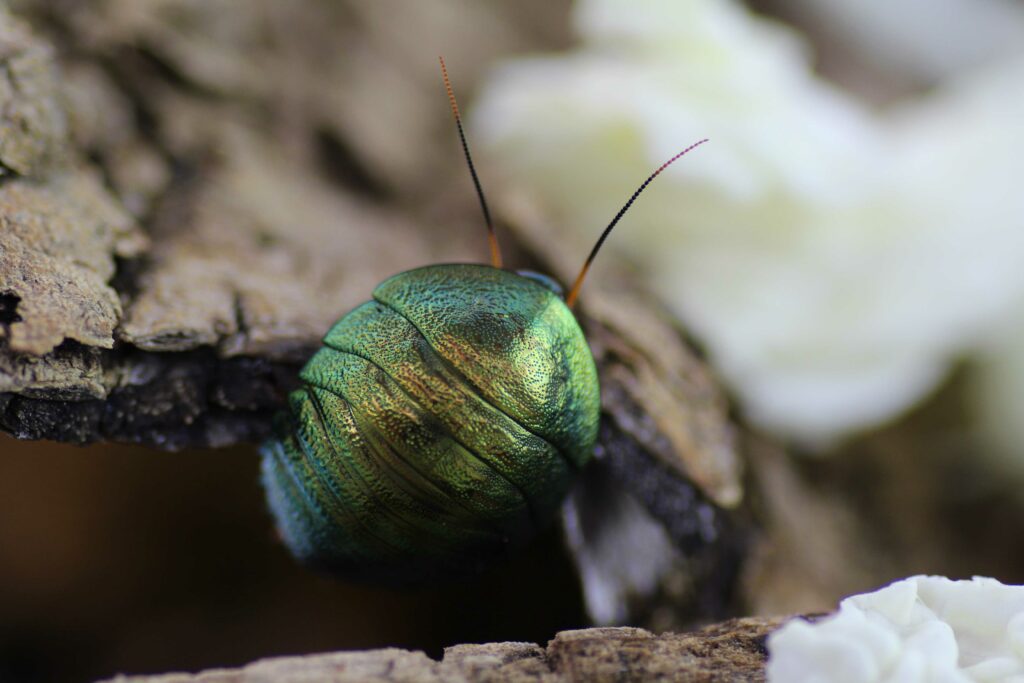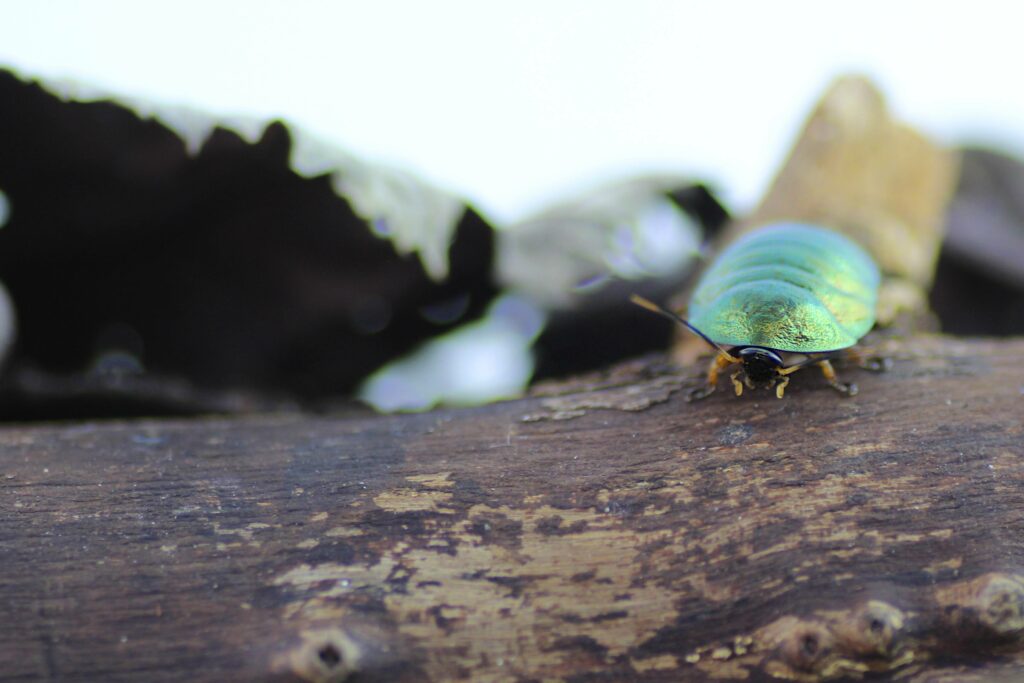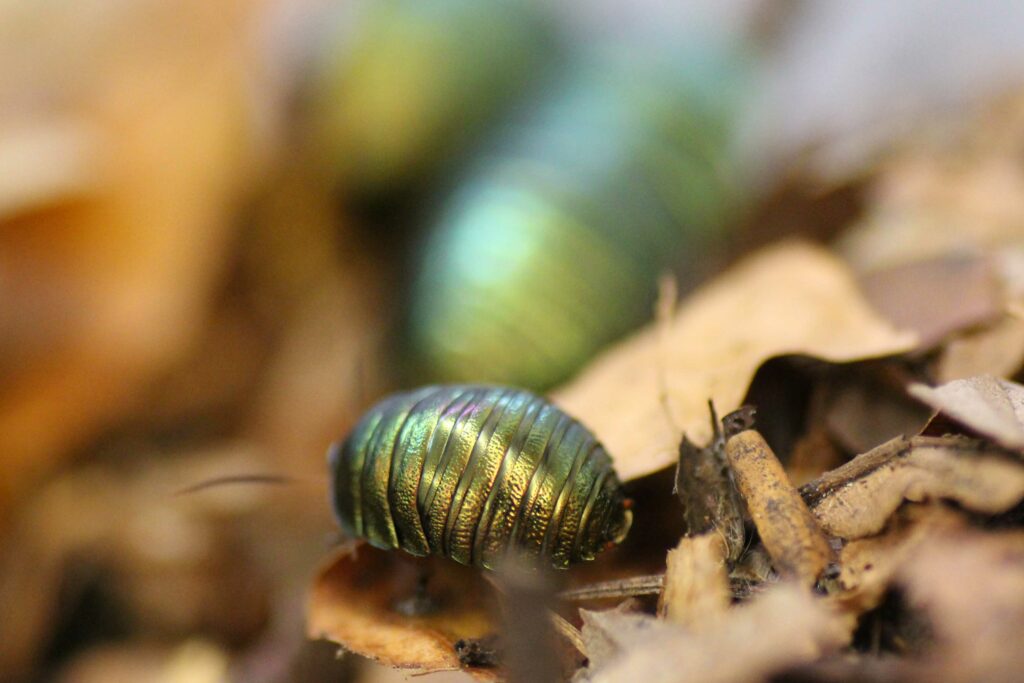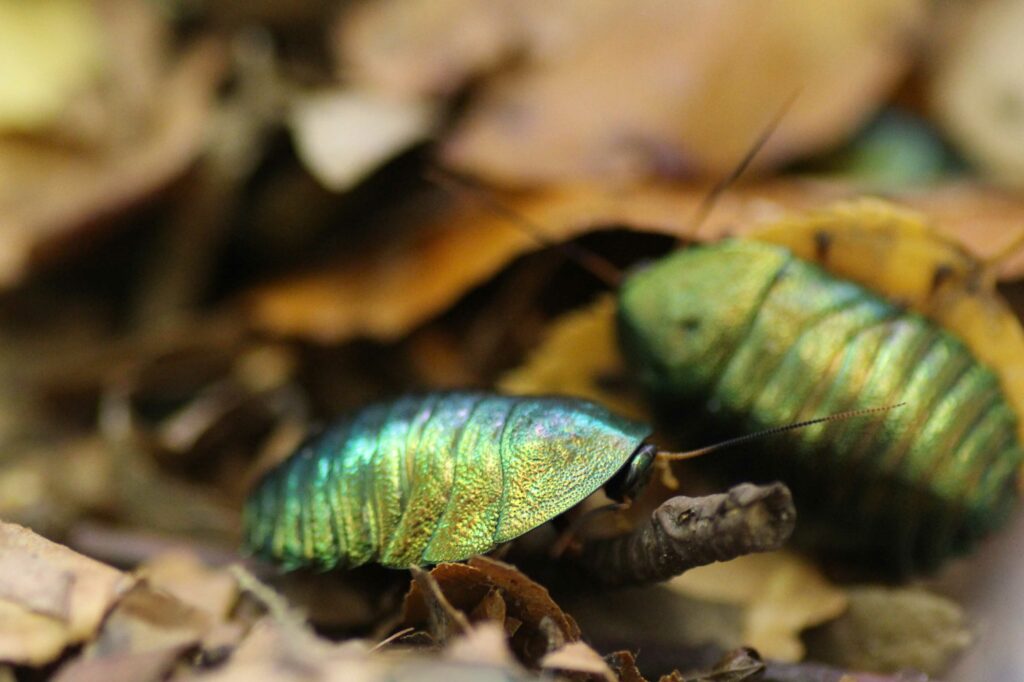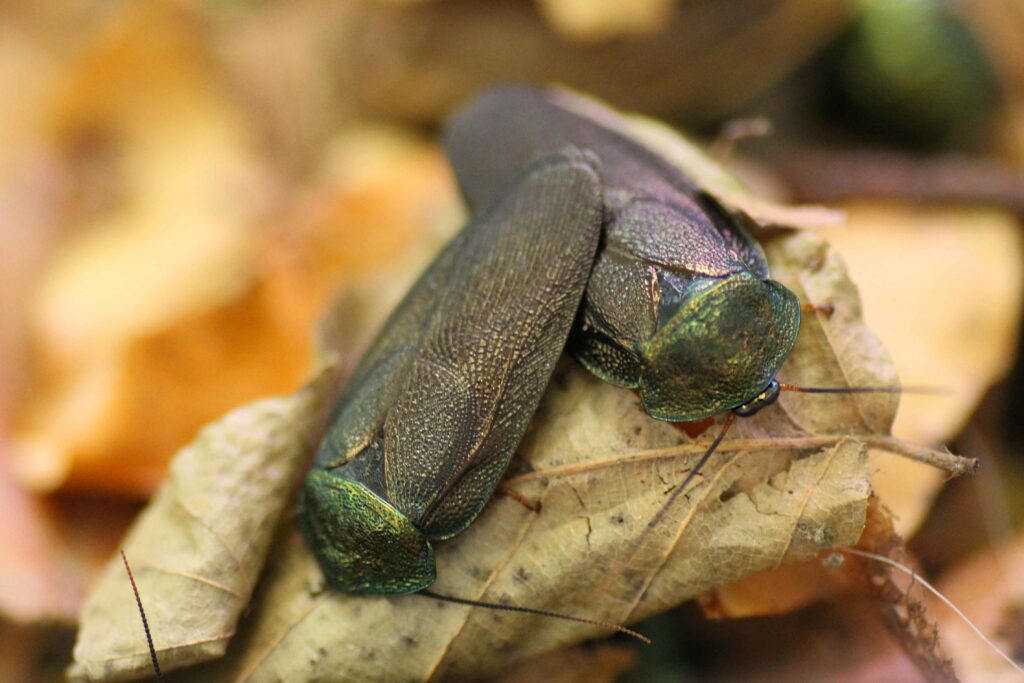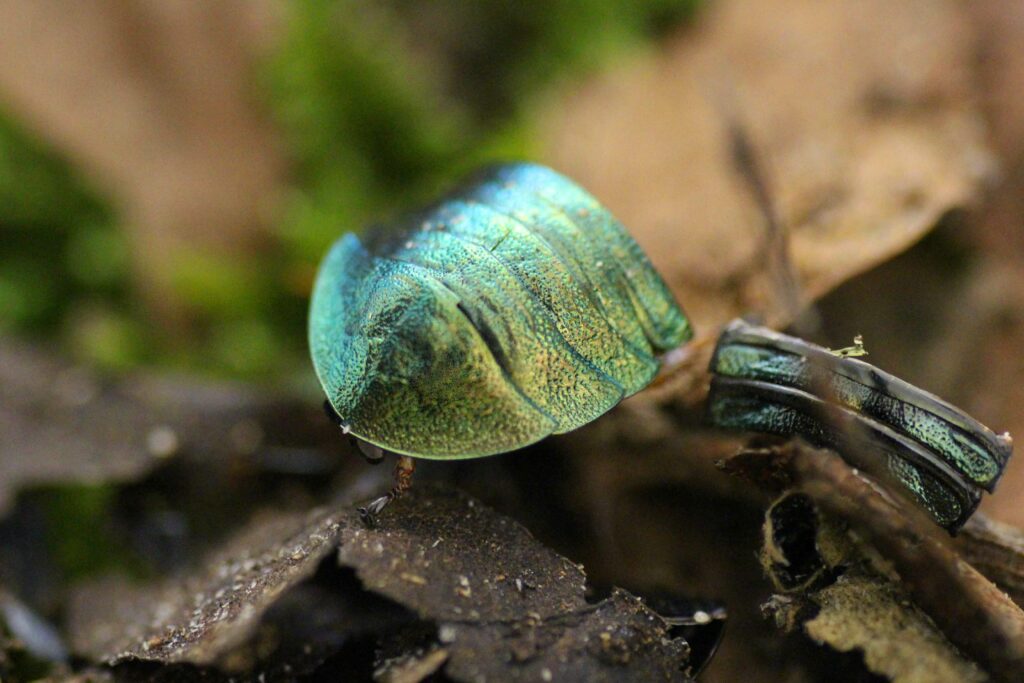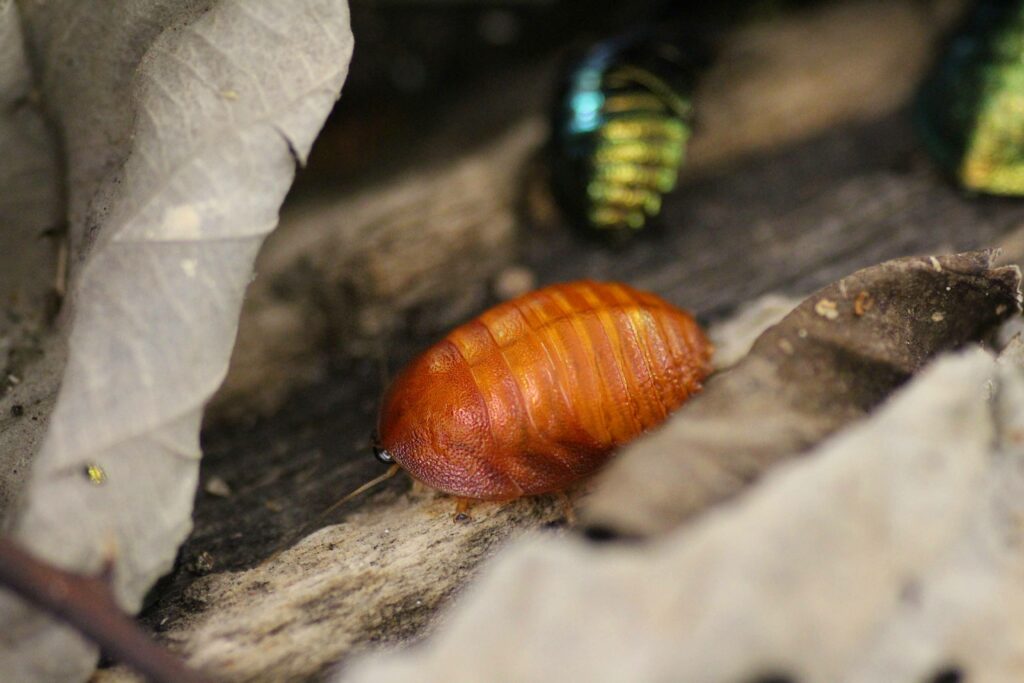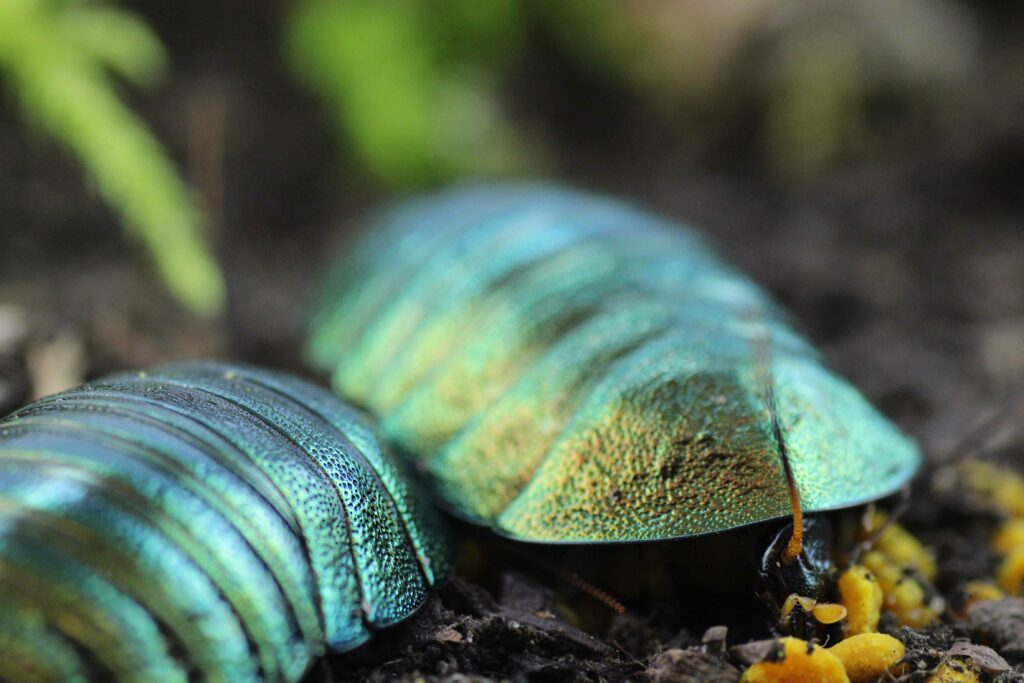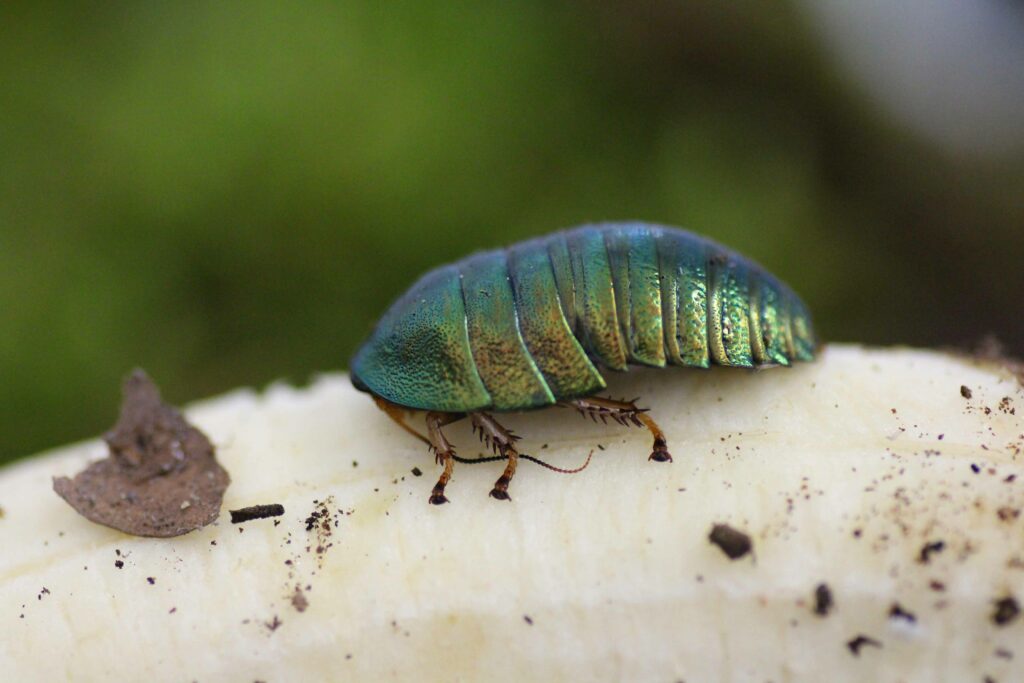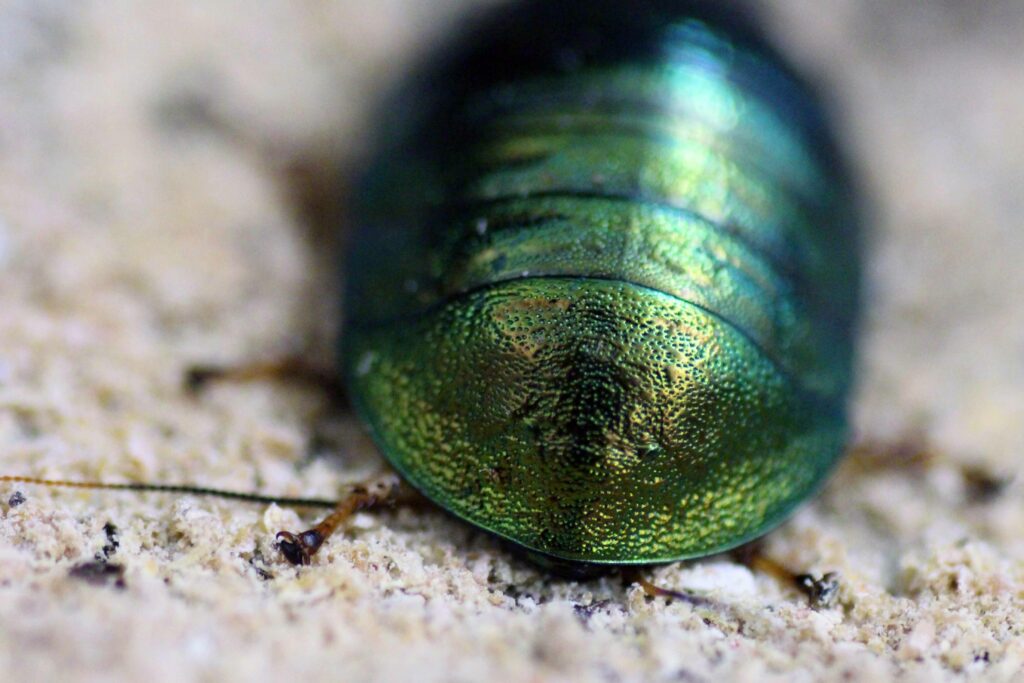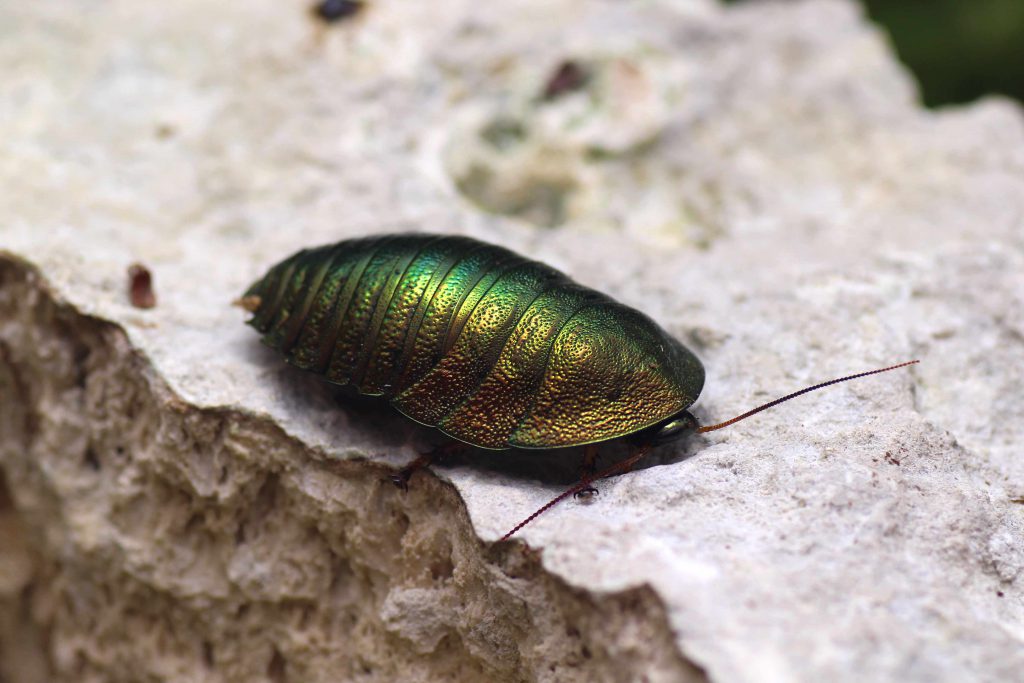
Pseudoglomeris magnifica

Origin:
- China, Vietnam

Temperature:
- 23-28 °C

Size:
- 3,0 cm
Perhaps some of you are wondering why you have ended up with an keeping report about a cockroach species. This simply shows how the Pseudoglomeris magnifica fascinates us. At first glance, it is its fascinating external appearance that reminds us more of a rose beetle than a cockroach. The metallic shimmering exoskeleton shines from green-metallic to copper-metallic depending on the incidence of light and is actually much too conspicuous for an insect that is so far down the food chain. But as soon as you combine their behaviour with their appearance, you realise that nature is never wrong.
Pseudoglomeris magnifica is a diurnal cockroach species that can be observed all day long in search of something to eat. It is not in a hurry, but moves very carefree until it reaches the highest point in the terrarium. On their way they like to nibble at everything they can taste. Especially lichens, pollen and fruits. Afterwards they clean themselves extensively, completely unprotected in the enclosure before they start their walk. Since the reproduction rate with a maximum of 12 nymphs per litter and a gestation period of up to 6 months is very low for a cockroach species, one could conclude that its appearance imitates an inedible rose chafer species. This protective mimicry can be found relatively often in nature and this would be a logical conclusion for me. Now all that is missing is the right beetle to fit this theory.
Container:
For a breeding group with 10 animals, you can already start with our Isopod Starter set. The size of 28x19x14 cm with a capacity of 5 l will last for a good time until the breeding group becomes too big for it. I cannot give an exact time, because the factor temperature and also the development stage of the breeding group plays a role.
We use our forest humus as a substrate. Since Pseudoglomeris magnifica like to absorb water in the form of water drops from the discs or leaves and is sprayed daily at best, we choose a substrate height of 5-10 cm. This way the substrate can absorb the water and no stagnant moisture is created. In addition, we inoculate the forest humus with springtails, which utilise impurities such as excrement and leftover food and thus prevent mould.
Pregnant, adult females like to hide under bent bark caves. Therefore you should offer them these hiding places in different climate zones in the terrarium, e.g. one hiding place on the ground and one without ground contact. So the animals that shed their skin can choose the wetter place near the ground and the one or other cockroach can choose the more dry hiding place.
We also offer them larger pieces of rotten wood. There they like to eat small corridors into it. They do not seem to eat the wood, because we can always find fine sawdust next to it. In these corridors one finds more pregnant females.
Branches and climbing possibilities should not be missing. You can always offer new branches covered with lichens and at the same time increase the food supply.
Pseudoglomeris magnifica are able to walk on smooth surfaces and therefore a well closing lid is necessary. The young nymphs are approx. 3 mm large and escape from every crack, no matter how small. We use a foam seal for windows attached to the upper edge of the box, with which we have had very good experience.
As heat source we can offer the crawlers a spotlight with 15 W. It’s also no problem if the temperature rises up to 30°C at the hottest point.
Breeding:
While living in the same keeping conditions the males of Pseudoglomeris magnifica become sexually mature about 1 month before the females. As the males live a little longer than one month, fertilisation can be made from the same litter. However, it makes sense to keep different developmental stages in the breeding group, so that the females, which become almost 2 years old, can be fertilized several times. The difference in sex can be recognized by the subgenital plate (if the animals are not yet sexually mature). The subgenital plate is the plate below the genitals. A large segment at the tip is always a female, two smaller segments at the tip a male. After the adult moult the difference is visible for everyone, because the males are slimmer and winged. But their wings are only used for gliding and you don’t have to be afraid that they will fly away when you open the terrarium.
After fertilization it takes another 4-6 months until the young nymphs are born viviparous (live fermenting). Until the first moult the newly born nymphs remain on the underside of their mother. It is not yet clear whether this not only provides them with additional protection but also with milk protein crystals. It takes about 6-9 months for the little nymphs to grow into sexually mature cockroaches. They can easily be kept with the adult animals during the rearing period.
Caring and feeding:
I catch myself again and again looking at the skin remains in the Pseudoglomeris magnifica terrarium in horror, until I remember again that the animals do not eat their stripped off skins and that they can hardly be distinguished from a dead cockroach. After skinning the still soft chitinous carapace has a white to ochre appearance, which changes back to its normal colouring during drying.
The animals love sweet fruits like mango, honeydew melons, bananas and apples more than anything else. Lichens and pollen are also a welcome change and are greedily devoured. To complete their diet, they must not be without proteins. For this reason we sprinkle our millipede food over the cork bark once a week. This protein feed mix has the property not to go mouldy as quickly as the conventional feed and for this reason it is also used for our Pseudoglomeris magnifica.
If you are not at home for a few days, you can get back on sweet Beetle jelly like our mango and banana varieties.
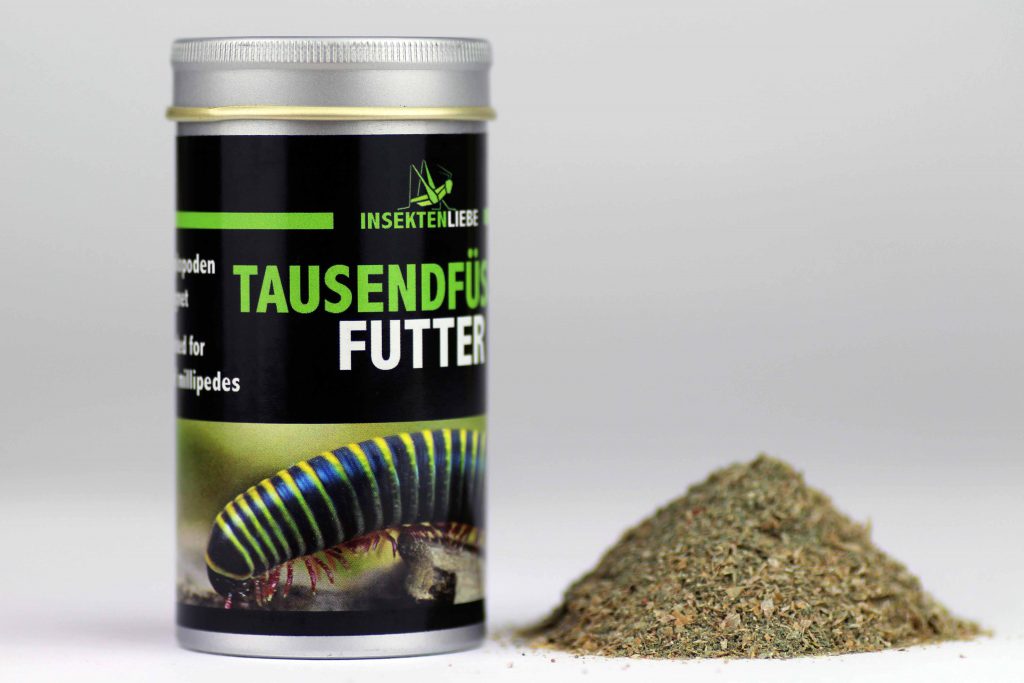


Fun Facts:
Finally, I would like to briefly mention the name Pseudoglomeris. All those, who visit our site regularly, probably know where the name comes from. The Pill Millipedes/Glomeris form an order within the millipede group. The outstanding characteristic of the Glomeris is the ability to curl up in case of danger. Also our Pseudo- (fake) glomeris magnifica imitates this behaviour and except for adult males and pregnant females they curl up a little when in danger.




